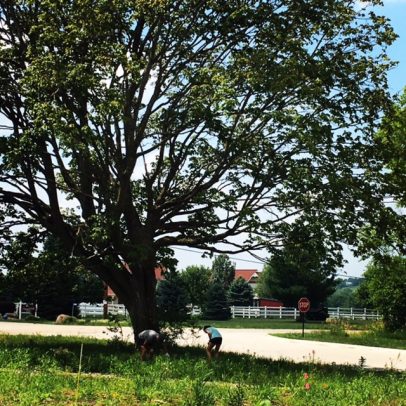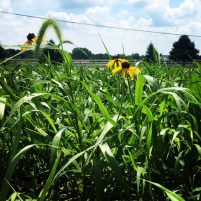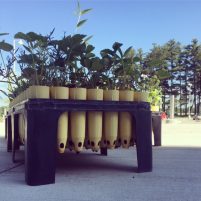Did you know that three-fourths of the world’s flowering plants and about 35 percent of the world’s food crops depend on pollinators to reproduce? Additionally, did you know that many pollinators such as bees, butterflies, moths and birds face challenges in today’s modern world? Waukee Community School District’s newest educational facility, Waukee Innovation and Learning Center (WILC), is using this real-world issue as a way to educate students, benefit the community and establish a natural habitat for pollinators and native plants and animals to thrive.
WILC is a striking new building at the corner of SE LA Grant Parkway and SE Ashworth Road. Many people drive, walk, or run by this property and question the current landscaping. What looks like overgrown weeds is actually a designated prairie in the making.
Currently, the Waukee APEX program is working with Prairie Landscapes of Iowa to establish a prairie on the WILC property. Employees of Prairie Landscapes work with APEX students and staff to provide education regarding the maintenance and care needed to establish a native prairie. Recent Waukee High School graduates Allison Keller and Carsen Kurth are both working for Prairie Landscapes of Iowa. You can find them outside pulling weeds on many hot summer days.
“Bringing the land back to a natural prairie is a long process,” Kurth said. “A common phrase used by people establishing prairies is, the first year the plants sleep, the second year they creep and the third year they leap.”
In other words, it will take the first two years for plants to establish a root system before they can take on a fuller, mature form in their third year. During that first year, efforts are directed at removing weedy plants that compete with the small prairie seedlings for light and water.
“Maintenance has been even more labor intensive this year than it normally is in the beginning since the WILC property was a construction site for two years. While the building was being built, weeds had those two years to grow and set seed repeatedly – making more weeds, which means a lot of initial work eliminating those weeds has to be done,” Keller said. “Once the plants are mature the work needed to maintain the prairie decreases dramatically because the weeds no longer can compete with the deep-rooted native plants.”
Inger Lamb, owner of Prairie Landscapes of Iowa, put down native prairie seed last winter and recently has planted some groups of prairie seedlings on the property. Her crew helps Keller and Kurth with weeding and spot-mowing some areas while the tiny prairie seedlings establish. Every week they see more new seedlings, and some plants are even starting to bloom. More will bloom as the summer progresses.
“One goal is to increase the butterfly population, but it is so much more than that,” Lamb said. “A prairie grows an entire ecosystem and that ecosystem is already starting at the WILC.”
If you walk around the property you will notice native insects, reptiles, birds and animals. As the prairie continues to grow, that ecosystem will strengthen and provide many benefits to teachers and students wanting to learn about and enjoy a little bit of Iowa’s original landscape.
Though it will take a few years and some hard work to establish the prairie, everyone involved believes the efforts will result in a rich, balanced urban ecosystem that will support insects, rodents, and wildlife. Keller and Kurth plan to return to the site in later years, to enjoy the habitat and reflect on the hard work they did in the summer of 2017.
For more information and/or questions regarding the WILC Prairie project, feel free to reach out to Inger Lamb, 515-250-1693.



